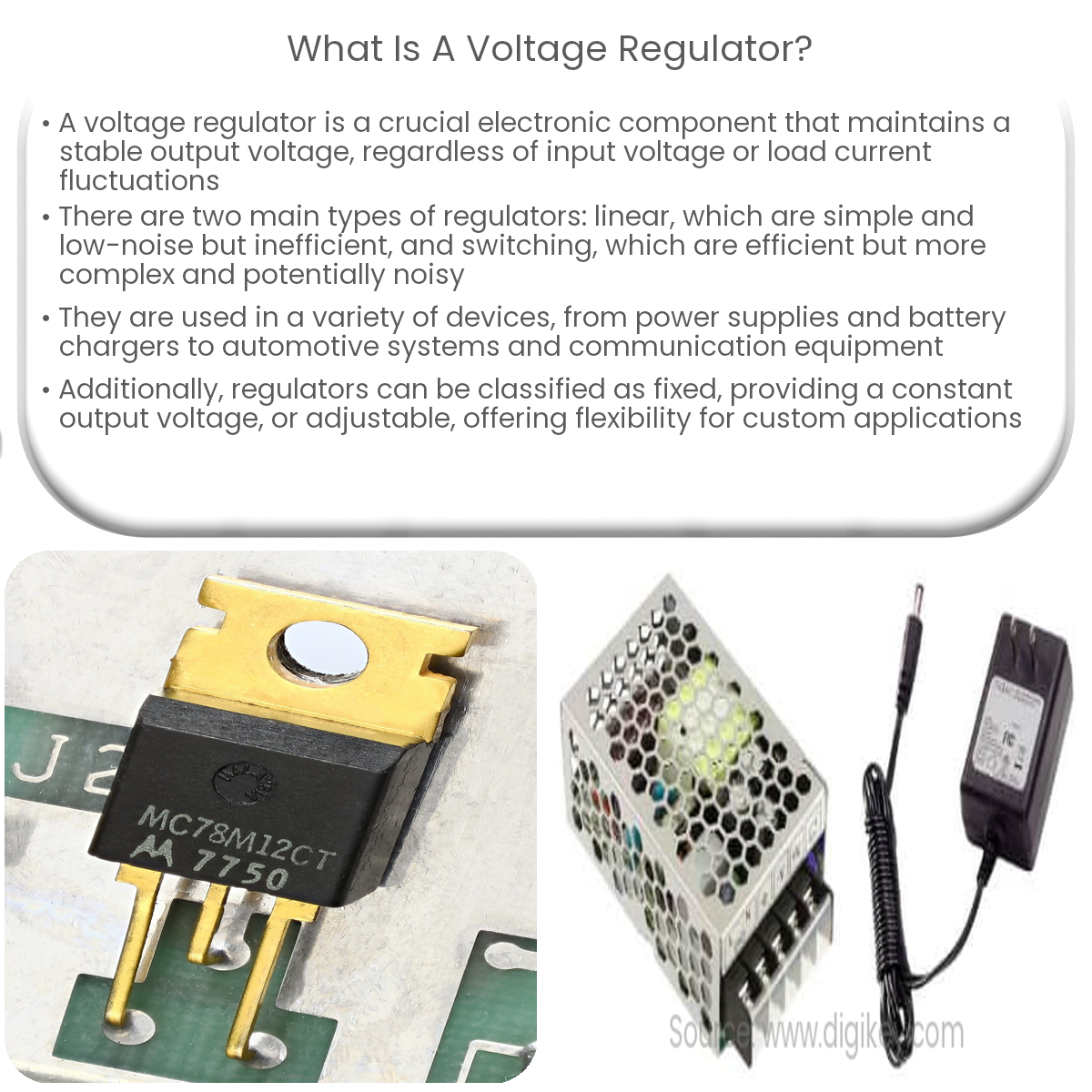A voltage regulator is an electrical component that maintains a stable output voltage, preventing damage to sensitive electronics from voltage fluctuations.
What is a Voltage Regulator?
A voltage regulator is an essential electrical component that maintains a stable output voltage in electronic circuits. Its primary purpose is to control voltage fluctuations and ensure that the system receives a constant voltage supply, thus preventing damage to sensitive electronic components.
Types of Voltage Regulators
There are two main types of voltage regulators:
- Linear Voltage Regulators
- Switching Voltage Regulators
Linear Voltage Regulators
Linear voltage regulators are analog devices that provide a stable output voltage by dissipating the excess input voltage as heat. The key component in a linear regulator is the transistor, which acts as a variable resistor. The transistor’s resistance changes in response to the input voltage, thus maintaining a constant output voltage.
Advantages of linear voltage regulators include:
- Simple design and easy implementation
- Low output noise
- Fast response time
However, linear regulators have some drawbacks:
- Low efficiency, especially when the input-output voltage difference is high
- Generation of heat, which may require heat sinks for thermal management
- Limited input voltage range
Switching Voltage Regulators
Switching voltage regulators are more complex than linear regulators, but they offer higher efficiency by converting the input voltage to the desired output voltage using a high-frequency switching action. These regulators typically consist of an inductor, a capacitor, a diode, and a switch (usually a transistor).
Advantages of switching regulators include:
- High efficiency, even with large input-output voltage differences
- Wide input voltage range
- Ability to step-up, step-down, or invert the input voltage
Some disadvantages of switching regulators are:
- More complex design and implementation
- Higher output noise
- Slower response time compared to linear regulators
Applications of Voltage Regulators
Voltage regulators are found in a wide range of applications, such as:
- Power supplies for electronic devices
- Battery chargers
- Automotive electronics
- Telecommunication systems
- Renewable energy systems
In conclusion, voltage regulators play a crucial role in ensuring the stable operation of electronic systems by maintaining a constant output voltage, thus protecting sensitive components from damage due to voltage fluctuations.


